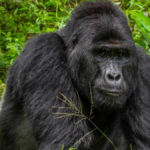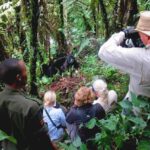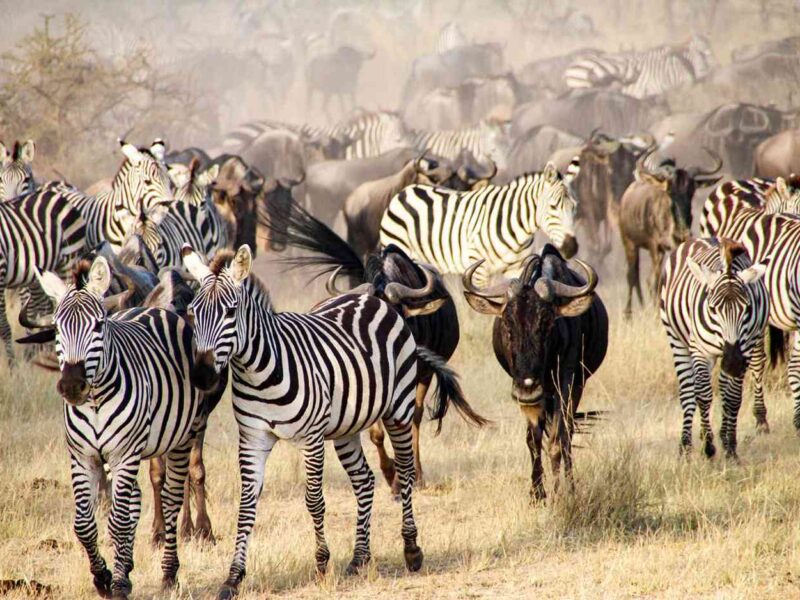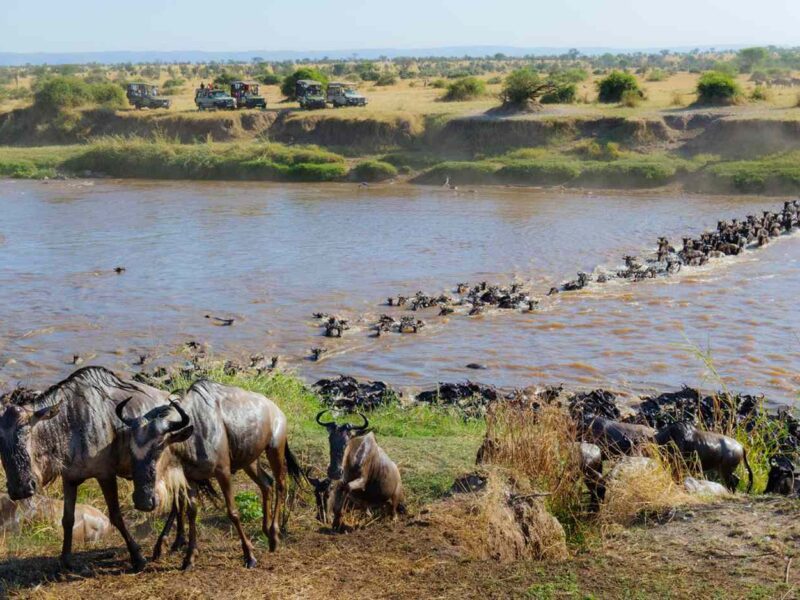
What is the Age Limit for Gorilla Trekking in Uganda?
March 25, 2025
Where is the Best Place to Go Gorilla Trekking?
March 27, 2025How Many Mountain Gorillas Are Left in Uganda?
Mountain gorillas (Gorilla beringei beringei) are one of the world’s most iconic and critically endangered species, captivating the hearts of wildlife enthusiasts around the globe. Uganda, home to two major habitats for these magnificent primates, plays a significant role in their conservation. The mountain gorilla population has steadily increased in recent decades due to concerted conservation efforts. This article delves into the current number of mountain gorillas in Uganda, the conservation strategies that have aided their recovery, and the challenges that continue to threaten their existence.
Understanding Mountain Gorillas
Mountain gorillas are a subspecies of the eastern gorilla and are distinguished by their larger size, thick fur, and the ability to adapt to the cold, high-altitude forests where they live. These primates inhabit the Virunga Mountains, which span across Uganda, Rwanda, and the Democratic Republic of Congo. In Uganda, mountain gorillas are primarily found in two national parks: Bwindi Impenetrable National Park and Mgahinga Gorilla National Park.
These parks are located in the southwestern part of Uganda and offer critical habitats for mountain gorillas. They live in tight-knit family groups, typically led by a dominant silverback, the largest male gorilla. Their diet mainly consists of plant material such as leaves, fruits, and bamboo shoots. Mountain gorillas are highly intelligent, with social structures and communication methods that are quite similar to humans, making them a subject of intense research and admiration.
The Current Population of Mountain Gorillas in Uganda
As of 2024, Uganda is home to an estimated 459 mountain gorillas. This population is concentrated in two primary locations: Bwindi Impenetrable National Park and Mgahinga Gorilla National Park. Bwindi Impenetrable National Park, a UNESCO World Heritage Site, houses the largest number, with over 400 gorillas residing in this lush, biodiverse ecosystem. Mgahinga, while smaller, supports a significant gorilla population as well.
Globally, the population of mountain gorillas has surpassed 1,000 individuals. Uganda is home to the largest portion of this population, making it a vital region for their survival. The increase in numbers has been a significant success story in wildlife conservation, particularly given the historical challenges faced by the species.
The Conservation Success Story
The recovery of the mountain gorilla population, particularly in Uganda, is a remarkable achievement in conservation history. Decades ago, the species faced a bleak future due to habitat loss, poaching, disease, and political instability in the region. In the 1980s, the global population of mountain gorillas had dwindled to fewer than 250 individuals, with a significant portion of these animals residing in Uganda.
However, a series of successful conservation efforts have turned the tide. Several key factors have contributed to the growing population:
Tourism and Ecotourism: The establishment of gorilla trekking as a major tourism attraction in Uganda has been pivotal. Gorilla trekking permits, which are sold to visitors, generate substantial revenue for conservation projects. These funds are reinvested in park management, anti-poaching measures, and community development, ensuring that the gorillas’ habitats are protected.
Anti-Poaching and Surveillance: The Uganda Wildlife Authority (UWA) has implemented robust anti-poaching measures, including increased patrols and surveillance in the gorilla habitats. The establishment of specialized rapid response teams has made it possible to address emerging threats quickly. As a result, poaching incidents have decreased significantly.
Habitat Protection and Restoration: Uganda has committed to preserving the forests that mountain gorillas depend on. Bwindi Impenetrable National Park and Mgahinga Gorilla National Park have been designated as protected areas, providing safe refuges for gorillas. Moreover, efforts to restore degraded parts of the parks, including replanting trees and controlling human encroachment, have enhanced the quality of the gorillas’ habitats.
Community Involvement: The success of mountain gorilla conservation has also been due to active community involvement. Local communities living around gorilla habitats benefit from eco-tourism and conservation programs. By offering employment opportunities in tourism and conservation, local people have become partners in protecting the gorillas. Education programs have also helped raise awareness about the importance of mountain gorillas and the benefits of their preservation.
Challenges Facing Mountain Gorillas
Despite the significant progress made in conservation, mountain gorillas still face ongoing challenges that threaten their future survival:
- Habitat Encroachment: As Uganda’s population grows, there is increasing pressure on land and resources. Agricultural expansion and infrastructure development in areas surrounding protected parks pose a risk to the gorillas’ habitats. Continued conservation efforts are needed to balance human development with the need for wildlife protection.
- Disease Transmission: Mountain gorillas are highly vulnerable to diseases that can be transmitted by humans. Respiratory infections are particularly dangerous for gorillas, and tourists who visit the parks are required to follow strict health guidelines to minimize this risk. Measures such as maintaining a safe distance between visitors and gorillas, as well as ensuring that visitors are in good health before trekking, have been put in place to protect these animals.
- Climate Change: The effects of climate change, including changing weather patterns, could disrupt the gorillas’ food sources and habitats. Warmer temperatures and altered rainfall patterns could affect the forest ecosystems, making it more difficult for gorillas to find the resources they need to survive. Climate change poses a long-term challenge that requires careful monitoring and adaptation strategies.
The Role of Ovacado Adventures Ltd. in Gorilla Conservation
Ovacado Adventures Ltd. is dedicated to supporting the conservation of mountain gorillas in Uganda through responsible tourism practices. We offer eco-friendly gorilla trekking tours that not only provide travelers with an unforgettable experience but also contribute to the conservation of gorillas and their habitats. A portion of the revenue from our tours is reinvested into wildlife protection and community development programs, ensuring that local people benefit from conservation efforts.
By raising awareness about the importance of preserving these magnificent creatures and promoting sustainable tourism, Ovacado Adventures Ltd. helps ensure that future generations will be able to experience the magic of encountering mountain gorillas in the wild.
Conclusion
The mountain gorilla population in Uganda, now estimated to be around 459 individuals, has shown remarkable growth over the past few decades. This success is a testament to the effectiveness of conservation efforts, including sustainable tourism, anti-poaching measures, habitat protection, and community engagement. However, challenges remain, and continued efforts are essential to securing a future for these incredible animals. As a leading tour operator in Uganda, Ovacado Adventures Ltd. remains committed to promoting responsible tourism and supporting the conservation of mountain gorillas, ensuring that this incredible species thrives for generations to come.




